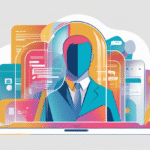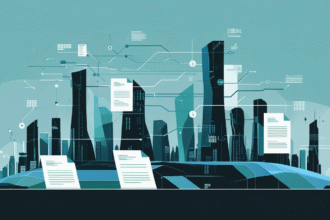Technology proliferation, at its core, results in a change for members of a society. In a positive light, this change can make the daily lives of people more efficient, allowing the adopters to focus their time and energy on other matters. Depositing a check via mobile application is one example. Rather than trekking to a brick-and-mortar location, waiting in line, interacting with a teller, and trekking back, consumers can leverage technological advances to save time and money. However, the vast amount of data aggregated in technology, in the form of mobile banking applications and subscription services for example, presents serious risk for cognitive overload with substantial impact to our Situational Awareness (“SA”). Herein, this work examines several problems foreseeable as our society continues to rely on emerging technologies and further examines the impact through a cognitive overload and SA perspective.
As reliance on emerging technology increases, society will face Data Security, Labor Disruptions, Ethical Resilience, and Environmental problems that will have substantial impact and consequences both on the individual and society.
As our reliance on emerging technologies continues to increase, society faces a multitude of challenges and complex problems with far reaching impacts and consequences. These challenges include enhanced cybersecurity and data privacy risk, employment disruptions related to automation, and ethical and social development. Notably, these challenges are supported and enhanced through the increasing dependence on emergent technologies such as Artificial Intelligence (“AI”), the Internet of Things (“IoT”), and the blockchain.
Data Security and Privacy
Increased dependence on emerging technologies amplifies the risk of cybersecurity threats. As technology becomes more interconnected with daily life as represented by smart homes, industrial control systems, wearable devices, and mobile applications, the potential avenues of attack for a malicious actor increase. Specifically, the risk of zero-day vulnerability exploitation increases exponentially as new devices are becoming connected to and controlled through the internet.
The Philips Hue Smart Light Bulb is an IoT device using Zigbee protocols. This “smart lightbulb” features Bluetooth and wireless connectivity which allows the user to control the light from a mobile application. However, researchers from Check Point discovered a zero-day vulnerability in this technology that allowed attackers to gain access to a home or business network by infecting the bulb with malware. When the user resets the bulb, the malware spreads to the internal network.
As more benign products are connected to the internet, more zero-day vulnerability exploitation opportunities exist for an attacker. Things like printers, refrigerators, TVs, thermostats, and lightbulbs becoming “smart” necessitates enhanced security awareness.
Automation impacts on labor
Technology has always been at the forefront of changing labor markets. The Box by Marc Levinson (2016) describes how the simple technological innovation in the form of the standardized shipping container displaced large numbers of longshoremen dock workers in the 1950s. Automation through modern emerging technologies like AI and robotics is having similar effects in the current labor market.
Specifically, companies like Tesla and Waymo are disrupting transportation and logistics by developing autonomous vehicles that are designed to replace truck drivers, taxi drivers, and delivery personnel. According to a 2020 McKinsey report, up to 800 million employees across the globe could be displaced by automation by 2030. While new types of jobs are likely to emerge to support the growing emerging technologies, the inherent risk of rapid automation and growth of emergent technologies is that these jobs require skills many displaced workers do not possess. Without robust technical retraining and education programs in place, economic inequality may deepen and further marginalize vulnerable populations.
Ethics and Bias
Emerging AI technology must be trained on preexisting data. If that underlying data is biased, the AI outputs can lean to discriminatory conduct and outcomes. This risk of bias is particularly concerning in areas with serious implications on normal life like criminal justice, employment decisions, and healthcare.
One example is the COMPAS algorithm used in the U.S. to assess the likelihood of a criminal’s recidivism. Investigations determined that the system was significantly more likely to falsely label black defendants as more likely to reoffend compared to white defendants. Amazon famously had to scrap an AI recruiting tool after they discovered it penalized resumes that included the word “Women’s”, because the training data was biased toward male-dominated resumes.
Crisis and Mental Health
Overdependence on technology has been shown to make society less resilient in times of crisis. During the COVID-19 pandemic and corresponding shutdowns and quarantines, schools and businesses rapidly shifted to remote platforms. While the purpose that of business continuity and survival, this action clearly identified a digital divide. Millions of students were without reliable internet or devices subsequently fell behind their cohorts in their studies.
There is also a growing concern and evidence that overuse of emergent technology, particularly enhancements to social media platforms designed to maximize engagement, are causing digital addiction and poor mental health in the form of increased anxiety, depression, and political polarization. Insider whistleblower, Frances Haugen, testified in 2021 that Facebook knew its platform was harming teens’ mental health but chose profit over safety.
Environmental impact
Emerging technology, the blockchain in particular, requires substantial energy resources to operate. Bitcoin mining consumes more electricity annually than some countries. The University of Cambridge’s Bitcoin Electricity index, Bitcoin mining efforts use more electricity annually than Argentina. Similarly, AI model training consumes vast computing power and resources. A University of Massachusetts Amherst study estimates that training a large AI model has a similar carbon footprint as five average cars over their lifetime.
Innovative companies like Helion Energy are trying to solve these energy and resource concerns by developing fusion reactors, another emerging technology. Also known as Low-energy Nuclear Reactors (LENR), Helion is one of several companies trying to commercialize recent advancements in the space. If successful, this technology promises to fully satisfy the world’s need for clean abundant energy, even with high energy demand as caused by the blockchain and AI development.
While emerging technologies are exciting and hold vast promise, they also introduce significant challenges that must be addressed and proactively managed. The Cybersecurity vulnerabilities, labor market disruptions, ethical, resilience, and environmental impacts discussed above are not hypothetical, they are real and ongoing consequences. In addition to the above, each of these identified problems have substantial impact and consequences on the individual and society from a cognitive overload and situational awareness perspective.
There are hidden costs to cognitive overload and situational awareness by over-relying on emerging technology.
As emerging technologies like AI, the IoTs, and the blockchain continue to proliferate personal and professional life, so does their impact on our Situational Awareness (“SA”) and cognition overload. The degradation of SI and cognitive performance goes beyond simple distraction or poor time management. Rather, it is systematic with profound effects on decision-making, learning, and well-being. The concept of “cognitive overload” as a condition where individuals are exposed to more information and demands than their cognitive systems can process efficiently. When exposed to complex technological systems, individuals experience a decline in their ability to perceive relevant details, maintain attention, and make rational decisions.
Cognitive costs
Emergent technologies are creating a deeper tie of digital platforms to modern work and educational environments. Push notifications, instant messaging (“IM”) applications like Microsoft Teams and Slack, data dashboards, and multitasking requirements continuously fragment attention. The constant switching between applications and task interruptions along with the individual’s attention is common in remote work and education and leads to a reduction in working memory, performance, and increased fatigue.
For example, in a digital firm, an employee might need to toggle between project management platforms, customer service chats, video calls, and AI analytics dashboards, each with its own unique interface and logic. Each representational shift carries the mental cost of switching between different types of information. The result is cognitive strain, impaired decision-making, and burnout.
Emerging AI systems and automation are exacerbating these problems. While intended to reduce workload, these systems often demand that humans supervise or intervene in tasks that require higher cognitive engagement and more sensitive decision-making. This is evident in the “automation complacency” where operators, over-reliant on systems like autopilot or recommended settings, lose the ability to monitor effectively. The Boeing 737 Max Air lion passenger airline crash is one catastrophic example. A defective stall sensor on the aircraft triggered an autonomous response where the system caused the aircraft to drastically reduce altitude. The pilots had to not only fly the complex aircraft but now they had to fight the defective system.
Situational Awareness
Situational Awareness is the ability to perceive one’s environment, comprehend its meaning, and project future circumstances. This is particularly critical in high-stakes, and sensitive environments such as aviation, healthcare, education, and cyber/military operations. Emerging technologies can impair SA even as they claim to enhance it. When information is filtered and pre-analyzed by AI systems humans lose their direct connection and exposure to the raw environment.
In the emerging IoTs technology, rather than turning on a light bulb with the physical switch, the individual can take their mobile device, see a few push notifications before navigating to the correct application, which may or may not have advertisement interruption. The simple act of turning on the light can expose an individual to a vast amount of fresh information which requires a portion of attention span taken from the individual’s SA.
A cybersecurity analysist monitoring network traffic may use AI monitoring systems to highlight threats or anomalies. However, if the analyst becomes too reliant on the system, they could lose touch with the underlying logic or patterns. When individuals are separated from the representations, they use to guide behavior, their cognitive control weakens. This must be considered in fast-moving threat environments where intuitive judgement and real-time adaptation are critical.
Similarly, in the medical field, doctors are increasingly depending on emerging diagnostic support systems. While these systems have shown benefits in the reduction of diagnostic errors for more routine cases, there is a cognitive cost that can effect more complex diagnostics. Like the cybersecurity analyst, doctors can over-rely on emerging technology which reduces their SA in complex and ambiguous cases.
Cognitive sustainability
To counter these trends, emerging technologies should be designed with cognitive load and SA in mind. Interface simplicity, adaptive information presentation, and intelligent filtering can help users manage attention more effectively. Rather than designing systems to replace human cognition, they should be designed to augment it. Training programs should also emphasize technology literacy, not just in terms of functionality, but also in cognitive risk awareness and impact to SA. For example, educating workers and students about multi-tasking limits, the importance of intentional recovery, and the effects of cognitive overload and impact to SA. Additionally, organizations should resist the urge to over-digitize every task. Analog systems and face-to-face interaction all service important cognitive and social functions that are not easily replaced.
Conclusion The future of emerging technologies hinges not only on innovation but on integration and understanding how these tools can interact with the cognitive limits of the human brain. Data security risks, labor disruptions, ethical concerns, environmental costs, and now Cognitive overload are deeply interconnected to emerging technology. As such proactive human centered design and policy are critical.









